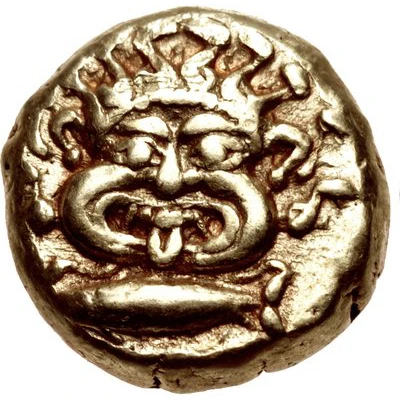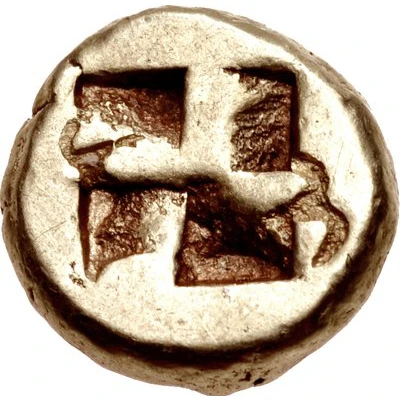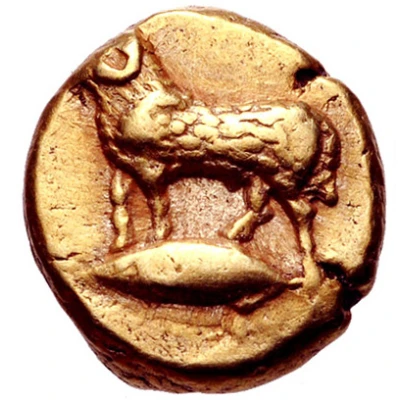


© Classical Numismatic Group, Inc.
Hemihekte 500 BC - 450 BC
| Electrum | 1.36 g | 9.0 mm |
| Issuer | Kyzikos (Mysia) |
|---|---|
| Period | City administration (600 BC - 1 AD) |
| Type | Standard circulation coin |
| Years | 500 BC - 450 BC |
| Value | Hemihekte (1⁄12) |
| Currency | Electrum Stater (600-330BC) |
| Composition | Electrum |
| Weight | 1.36 g |
| Diameter | 9.0 mm |
| Shape | Round (irregular) |
| Technique | Hammered, Incuse |
| Demonetized | Yes |
| Updated | 2024-10-10 |
| Numista | N#134114 |
|---|---|
| Rarity index | 100% |
Reverse
Quadripartite incuse square.
Interesting fact
The Hemihekte coin was used as a form of currency in the ancient Greek city of Kyzikos (Mysia) during the 5th century BC. Despite its small weight of 1.36 grams, it was considered a significant denomination in its time and was used for everyday transactions. The coin's design features the image of a mythical creature called a griffin, which was a symbol of protection and strength in ancient Greek culture. The coin's minting process was quite advanced for its time, as it was produced using a technique called "electrum," which involved mixing silver and gold to create a unique and valuable metal alloy. Overall, the Hemihekte coin is a fascinating piece of history that provides insight into the economic and cultural practices of ancient Greece.



